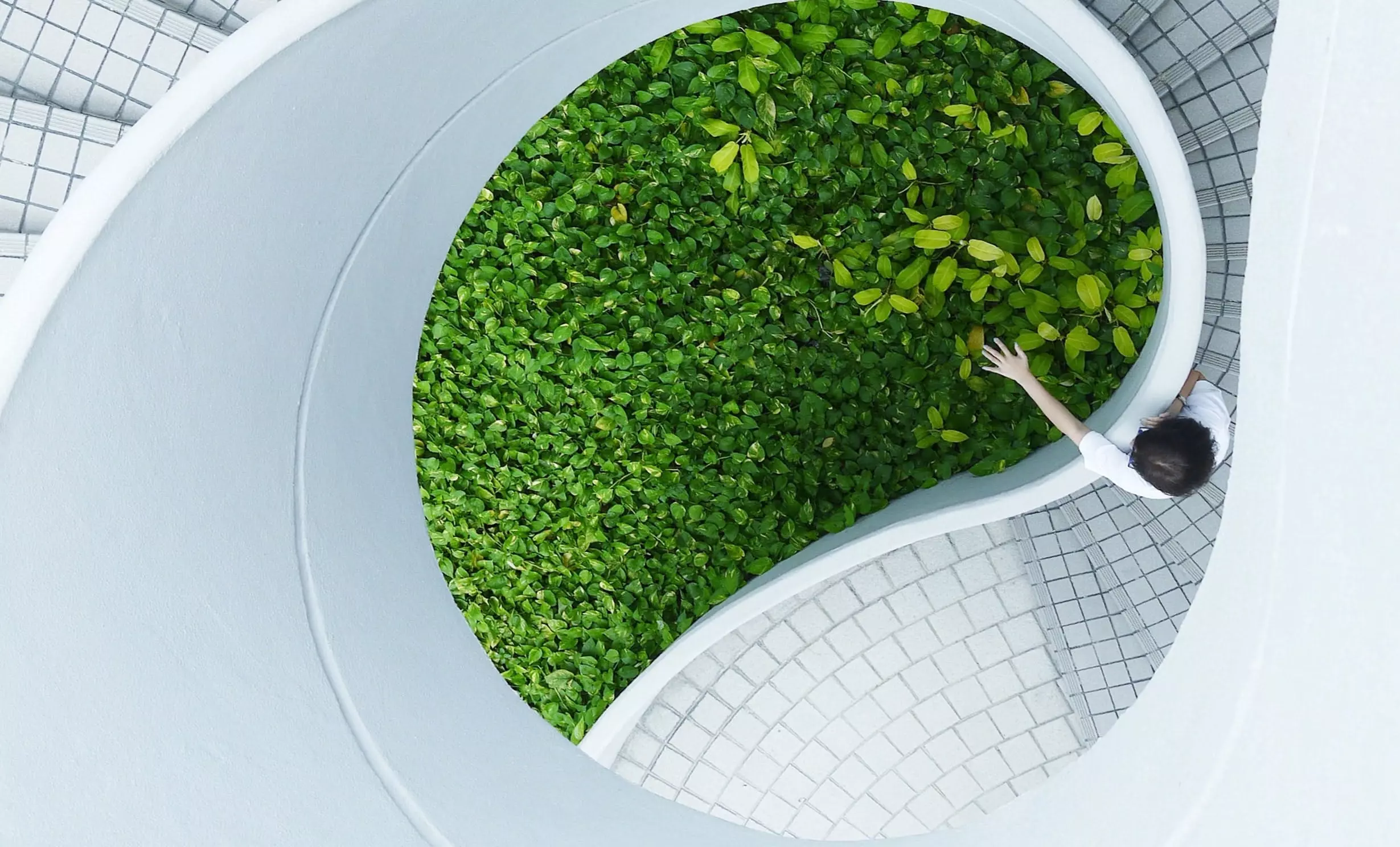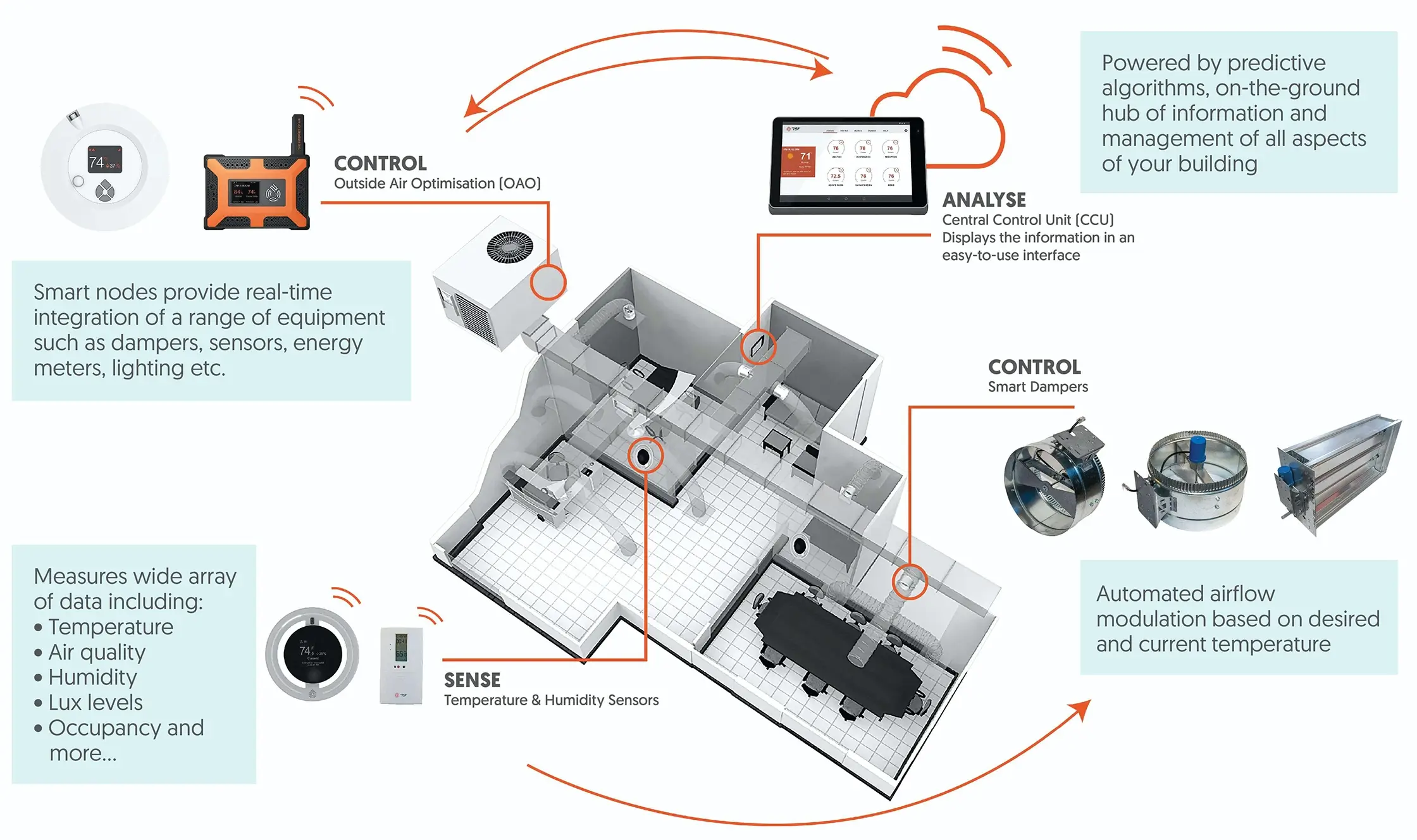
Sophisticated new solutions have emerged to tackle the new realities of post-pandemic work arrangements, including staggered work occupancy, greater sustainability targets, and health and hygiene concerns.
The workplace of the future: smart, sustainable, energy-efficient
As organisations navigate new working arrangements in 2022, how can technology help to shape green, welcoming workplaces of the future?
The workplace as we know it has evolved dramatically during the Covid-19 pandemic, expanding into our homes and complex digital-physical spaces. As organisations and their employees continue to navigate hybrid working arrangements this year, how can technology help to shape green and conducive workplaces of the future?
Many new innovations are aimed at helping workplaces save energy. While energy efficiency may not be the snazziest of climate solutions, it remains a potent and cost-effective way to slash emissions without major reworks of existing infrastructure. The International Energy Agency (IEA) has projected that low-cost measures, such as better ventilation and LED lighting, if implemented globally, could slash 3.5 gigatonnes worth of carbon emissions a year.
The savings would amount to 40 per cent of the emissions that need to be abated to limit global warming to 2 degrees Celsius. With the increased focus on climate mitigation, energy efficiency solutions for the built sector is now A US$340 billion market globally that is set to grow by over 8 per cent through 2027.
In addition, in Singapore, energy efficiency incentives like the Green Mark Incentive Scheme for Existing Buildings 2.0 are encouraging companies to pursue smart, sustainable and predictive solutions in the workplace. The $63 million scheme helps building owners undertake retrofits to raise the sustainability standards of their buildings.
Companies are paying closer attention to their carbon footprint to support sustainability goals, and this requires more tools to monitor and optimise utilities consumption. These tools usually come in the form of building intelligence systems, such as SP Digital’s GET Control. The system uses AI and IoT to optimise and regulate air-conditioning and maximise energy efficiency in real-time, based on changes in occupancy, current weather conditions and forecast data. The smart damper system, for example, divides large open-plan office spaces into micro-zones to enable better air-flow distribution and control. With predictive intelligence working together with all the sensors and smart dampers, data is sent wirelessly to a central control unit that recommends and adjusts the dampers dynamically such that the desired temperatures are met, making the office energy efficient and comfortable.

GET Control’s Dynamic Airflow Balancing in real-time is suitable for brownfield and greenfield projects.

These heat maps show how air temperature is regulated by GET Control. Left: Before implementation, there are hot and cold spots in the office. Right: After implentation, the office is evenly cooled.
Clement Cheong, SP Digital’s vice president of sales and customer operations, says that GET Control responds to the needs of corporate real estate owners and commercial landlords in Singapore.
“Landlords are seeing more occupants coming into work and at different times,” he says. “They need to adapt their buildings and systems to cope with this change dynamically. For example, they do not need as much cooling or fresh air supply at non-peak or low occupancy periods.”
Moreover, he adds that the pandemic has also made employees even more conscious of indoor environmental quality. “They want to have visibility into IAQ (Indoor Air Quality) and the building’s measures to monitor and improve IAQ. Even though occupants may spend less time in the office, they want a better, healthier indoor experience.”
He explains that currently, building owners or tenants have limited visibility into indoor air quality in offices and limited ability to intelligently control it. Traditional air side control and management technologies tend to be “reactive”, that is, facility managers make adjustments when occupants complain of any indoor thermal discomfort. Because such technologies do not take into account dynamic changes in ambient temperatures, they are not as energy efficient as a system with real-time tracking capabilities like GET Control.
He shares a case study from an educational institution in Singapore, where facility managers were faced with frequent occupant complaints about hot and cold spots in the office. Besides the fact that facility managers had to make time-consuming manual adjustments, the building’s cooling efficiency was poor, resulting in high energy use and carbon emissions. When SP Digital’s GET Control was deployed, the site saw more than 30 per cent airside cooling energy savings, enhanced thermal comfort and indoor air quality for employees, and improved operations and productivity.
On a larger scale, some multinational corporations are leading the way in greening their offices, and their examples might provide insights into the future of the sustainable workplace. One of them is Meta, which operates the social media platform Facebook and aims to achieve a 50 per cent reduction in carbon by 2030. At its 260,000 square-feet office in Singapore, spread over four floors at Marina One Tower, this target has translated into environmental control systems that use the latest in automated sensor technology, which can optimise even the smallest indicators of energy efficiency. Numerous sensors are in place to measure temperature, air, light and motion open spaces, meeting rooms and lifts.
Apart from office management, Meta Singapore also uses technology to assist employees to adopt carbon reducing behaviours, and, while in the workplace, to holistically analyse their carbon footprint across the product supply chain, recycling, water and waste management.
Looking ahead globally, the journey to make buildings more sustainable will be a long one. Currently, the built environment is responsible for nearly 40 per cent of all greenhouse gas emissions in the world. According to a report by the International Energy Agency (IEA), the 2020 pandemic caused a drop in the buildings sector carbon emissions, followed by a moderate rebound in 2021, but buildings are not on track to achieve carbon neutrality by 2050.
In Singapore, energy efficiency remains a core tenet of the city-state’s decarbonisation pathway, even as longer-term solutions such as carbon capture and clean energy imports are being considered for the next few decades. Power generation firms are provided subsidies to upgrade their turbines and software; a similar fund is in place for building owners to buy more efficient air-conditioning systems and install motion sensors that automatically switch off appliances when not needed. Buildings contribute close to 14 per cent of Singapore’s national emissions — the high fraction resulting from the almost complete urbanisation of the island-state.
As part of its efforts to reach net-zero emissions around 2050, the government wants 80 per cent of buildings in Singapore – both old and new – to adopt energy efficiency measures by 2030, up from 50 per cent today.
There is growing awareness among businesses that greening their offices makes economic and environmental sense. The Singapore Building and Construction Authority’s Green Mark Incentive for Existing Buildings – a $100 million fund started to co-sponsor the adoption of energy-efficient technologies in existing buildings – has been fully committed, as has a separate $50 million fund which does the same for small and medium enterprises.
This suggests that more landlords in Singapore understand that the initial outlays of such green investments may be high, but returns in the long run justify the cost, given the changes in expectations of workplace experience, energy efficiency and sustainability in post-pandemic times.
This article was first published by Nika Dhankar Rhoonholm from Eco-Business on 10 June 2022 The workplace of the future: smart, sustainable, holistic.